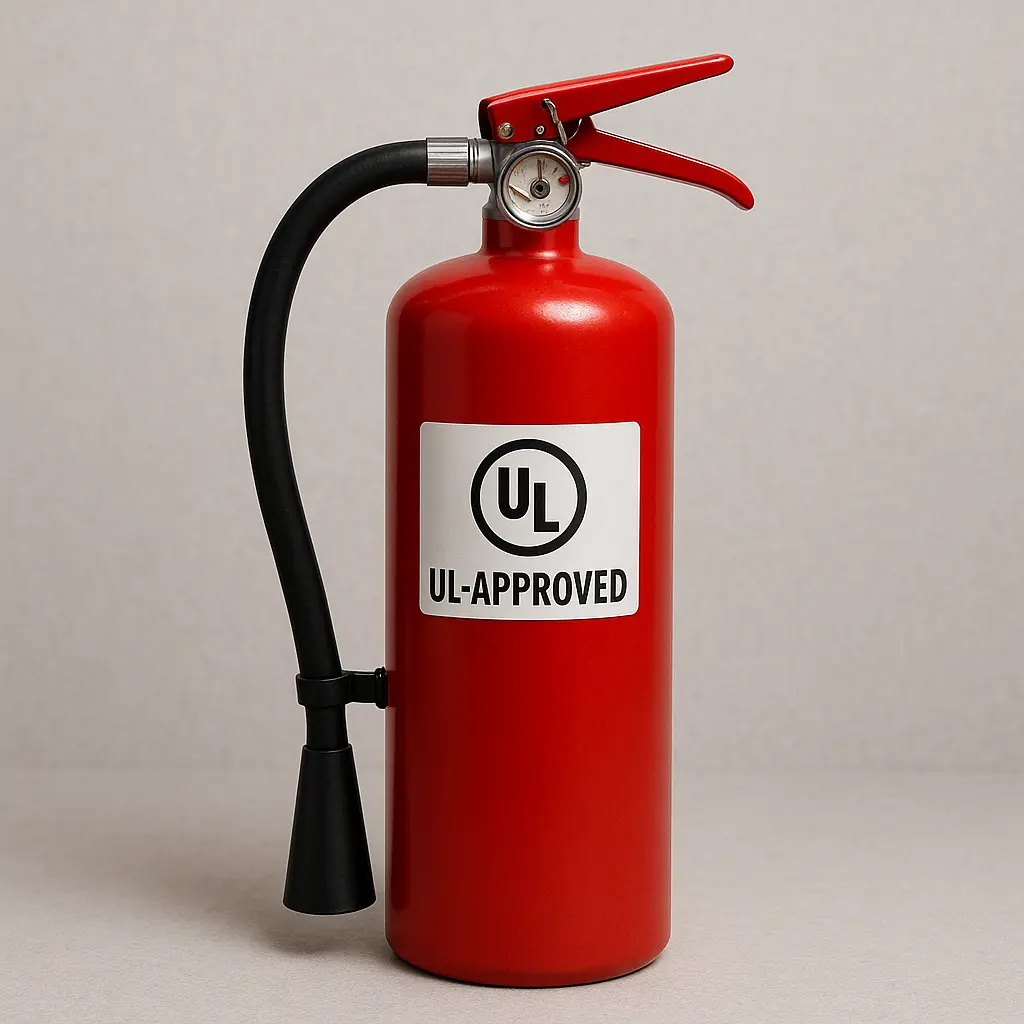A Complete Guide to Understanding UL-Approved Labels
Mount Dora, United States - June 16, 2025 / Data Graphics, Inc. /
When shopping for products, do you ever stop to wonder what those little labels really mean? A UL-approved label might seem like just another piece of packaging, but it’s packed with meaning and significance. It’s not just a mark of quality; it’s your assurance that the product has passed rigorous safety tests. After spending countless hours researching, ensuring accuracy, and putting together this guide, I can say that understanding these labels is crucial for making smart purchases. Whether you’re eyeing new electronics or household appliances, knowing what the UL label stands for can save you from dangerous missteps. Let’s dive into what makes these labels so important and how they can help you shop confidently.
What is a UL-Approved Label?
A UL-Approved Label is more than just a label on a product; it’s a badge of trust provided by Underwriters Laboratories (UL), an organization with a long-standing reputation for developing safety standards. This certification mark signifies that a product has undergone rigorous testing, ensuring it meets the highest safety and performance criteria before reaching consumers.
Imagine purchasing a kitchen appliance, like a microwave; seeing the UL label gives you confidence that it has been scrutinized for electrical safety, fire hazards, and other potential dangers.
These labels serve an essential purpose—they reassure not only consumers but also regulatory authorities and retailers about the compliance of products with established safety standards. When you see a UL label, it indicates that the manufacturer has followed strict protocols throughout the product’s life cycle to maintain compliance. This includes sourcing safe materials and adhering to guidelines during manufacturing.
In essence, using UL-approved labels can bolster consumer trust in your products significantly. Many individuals regard these labels as benchmarks of safety—especially when it comes to household items such as hair dryers or electrical heating pads. They expect them to not only perform well but also not pose any threat to their well-being while in use. Without this mark, however, doubts may arise concerning the product’s reliability and overall safety.
As we continue exploring these certifications, let’s look at how to spot authentic markings and understand the distinctions between the various types available in the market.
Identifying Authentic Labels
When it comes to ensuring safety and compliance in products, the presence of an authentic UL label is essential. It’s not just a fancy label—it’s a guarantee that your product meets rigorous safety standards. However, it’s easy to fall prey to counterfeit labels if you’re not aware of what to look for.
Key Identifiers of Authentic UL Labels
- UL in a Circle: The most recognizable feature is the UL logo enclosed in a circle. This iconic symbol signifies that the product has passed UL’s stringent testing.
- Product Identifier: Each genuine UL label will feature a unique product identifier. This serves as a direct link between the product and its certification, making it traceable.
- Issue and Control Numbers: Underneath the logo, you’ll find issue and control numbers. These are critical as they can be cross-verified against UL’s online database to confirm authenticity.
- Holographic Image: Some labels now include holographic elements designed specifically to prevent counterfeiting. This security feature can reflect light in different ways and often appears when viewed from various angles.
For added security, it’s wise to check these markers under good lighting conditions. A thorough inspection can help in spotting imperfections or inconsistencies that typically indicate a counterfeit label. Remember, the quality of printing on authentic UL labels tends to be higher—so any blurriness should raise red flags. Having recognized the markers, it’s important to understand the significance of having that certification for products in various industries.
Why UL Approval Matters
Gaining UL approval isn’t merely a checkbox to tick off on a manufacturing checklist; it’s a strong signal that speaks volumes about a product’s reliability and safety standards. In an environment where industrial mishaps occur far too frequently, having that UL label can spell the difference between safety and catastrophe.
Additionally, acquiring UL certification can be advantageous beyond mere compliance; it can offer significant competitive benefits.
Products bearing the UL mark are statistically more likely to catch consumer attention. The peace of mind provided by knowing that a product has undergone thorough testing and complies with rigorous safety standards cannot be underestimated.
Lower insurance premiums represent another tangible benefit for manufacturers who invest the time and money into UL certification processes. Insurers recognize that certified products pose less risk, translating directly into potential savings for companies, which can then reinvest in development and innovation.
The compliance process itself involves adhering to over 1,000 diverse safety standards across multiple industries, including electrical safety, fire safety, and environmental protection, among others. This extensive framework ensures not only that products meet baseline safety requirements but also allows for continuous improvement in product designs over time—encouraging innovation while safeguarding public interest.
Given these insights, recognizing the various categories within this vital certification landscape serves as an essential next step for understanding how UL impacts both manufacturers and consumers alike.
Categories of UL-Certified Products
The diversity in the range of UL-certified products is not just impressive; it ensures safety and reliability across countless applications. The UL mark signifies that each product has undergone rigorous testing to meet stringent safety standards, providing consumers with the confidence they need in their purchases.
For instance, electrical appliances cover everything from small devices like blenders and toasters to larger equipment used in industrial settings. Each of these must meet strict criteria concerning electrical safety, reducing the risk of fire or electrical failure—an essential consideration for any consumer or business owner.
But it’s not just everyday appliances that can display the trusted UL mark; there are also critical items in specialized sectors.
- Chemical Processing Equipment: This category encompasses products designed for managing hazardous substances, including fire-retardant materials that are essential for ensuring safety in laboratories and factories. By meeting UL’s standards, manufacturers can deliver equipment that minimizes risks associated with chemical hazards.
- Healthcare Devices: Safety is paramount when it comes to medical equipment, especially those used for diagnostics and patient care. From MRI machines to blood analyzers, UL certification assures both healthcare professionals and patients of their reliability and safety.
- Building Materials: When it comes to construction, materials like roofing shingles and fire-rated doors are indispensable. Having these products UL-certified guarantees that they conform to stringent requirements meant to protect against potential fire hazards and other risks.
- Consumer Electronics: In today’s tech-driven world, devices like smartphones, laptops, and gaming consoles dominate our lives. UL certification helps ensure these gadgets are safe to use over extended periods without overheating or posing electrical hazards.
This exhaustive range underscores UL’s dedication to enhancing safety throughout diverse industries. As products continually evolve with technology, the importance of adhering to updated safety standards remains critical.
Advantages of Using UL Labels
For manufacturers, UL labels signify more than just compliance; they establish a foundation of safety and trust that resonates through marketing channels. By adhering to the rigorous protocols set forth by Underwriters Laboratories (UL), companies bolster their reputation and signal to consumers that quality is a priority. Whether selling appliances or electrical equipment, a UL mark can make the difference between securing a sale and losing it. Consumers today are increasingly discerning, and many prefer to invest in products marked with certifications such as UL because these labels serve as clear indicators of reliability.
Common Misunderstandings and Errors
One of the most prevalent myths is that all products require UL certification. While UL approval is a mark of safety that speaks volumes, not every product on the market needs it. Many manufacturers find themselves puzzled about this requirement, believing their items should automatically carry the UL label to be deemed safe. However, understanding your specific industry regulations is crucial. For example, certain products may fall under different regulatory agencies or standards that don’t require UL certification but still ensure safety compliance.
Another significant misunderstanding is the assumption that achieving certification is a one-time feat. In reality, UL certification involves maintaining ongoing compliance with established standards. Once your product earns its certification, it doesn’t mean you can walk away; instead, it signals that you must regularly adhere to those safety measures. This notion seems to slip through the fingers of many manufacturers, leading them to overlook essential follow-up inspections or updates to their production processes, which could jeopardize the integrity of their devices.
You might think that the financial burden of pursuing UL certification is too steep; indeed, some may view it as cost-prohibitive. It’s true that the initial expenses associated with undergoing the certification process can appear daunting; however, it’s vital to consider the long-term benefits. The potential for product recalls and liability issues may far exceed the upfront investment in securing a proper UL certification. Not only will an approved label enhance your brand’s credibility but more importantly, it ensures customer safety and satisfaction.
Gaining clarity on these misconceptions provides a stronger foundation for both manufacturers and consumers as they navigate their respective landscapes. By addressing these misunderstandings, we facilitate informed decisions and contribute to a safer marketplace.
Finding Certified Items
Locating UL-certified items can feel a bit overwhelming at first, but it’s easier than you might think once you know where to look. The UL Product iQ® database serves as an invaluable resource and central hub for consumers and retailers alike. By entering specific details such as the product’s issue or control number, you can quickly verify whether an item carries the prestigious UL certification. This tool acts like a digital compass, guiding you to safe and compliant products.
To streamline this process further, visit our website at Data Graphics Inc. or contact us at 877.740.5520 for tailored solutions on obtaining certified labeling that ensures every product you choose symbolizes assurance and quality.

Contact Information:
Data Graphics, Inc.
3800 Progress Blvd
Mount Dora, FL 32757
United States
Buffy Carroll
(352) 589-1312
https://www.datagraphicsinc.com/


